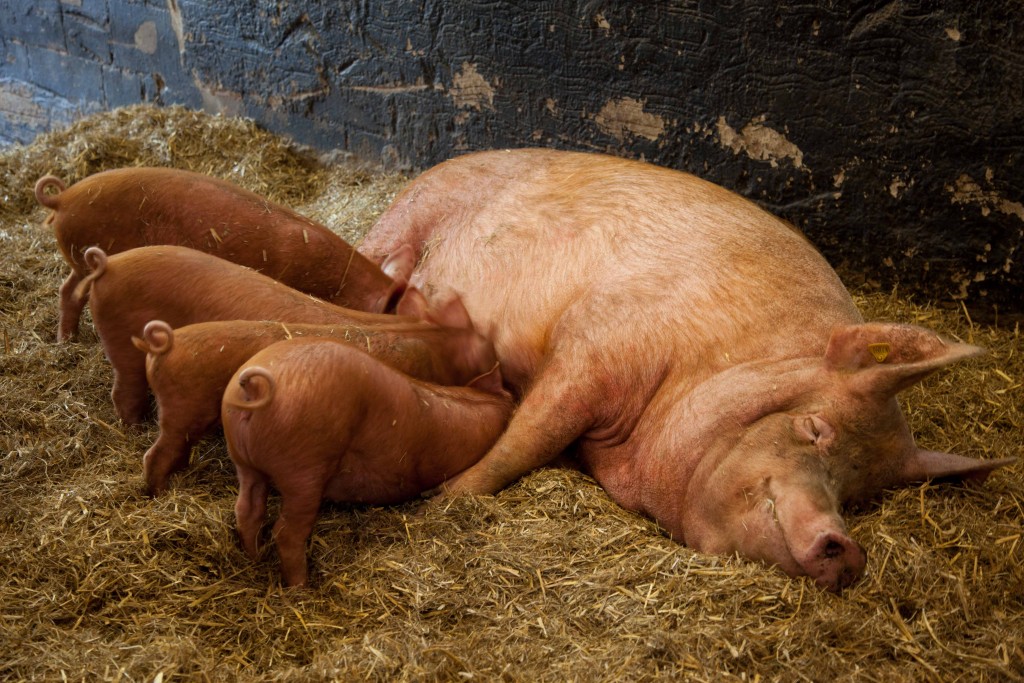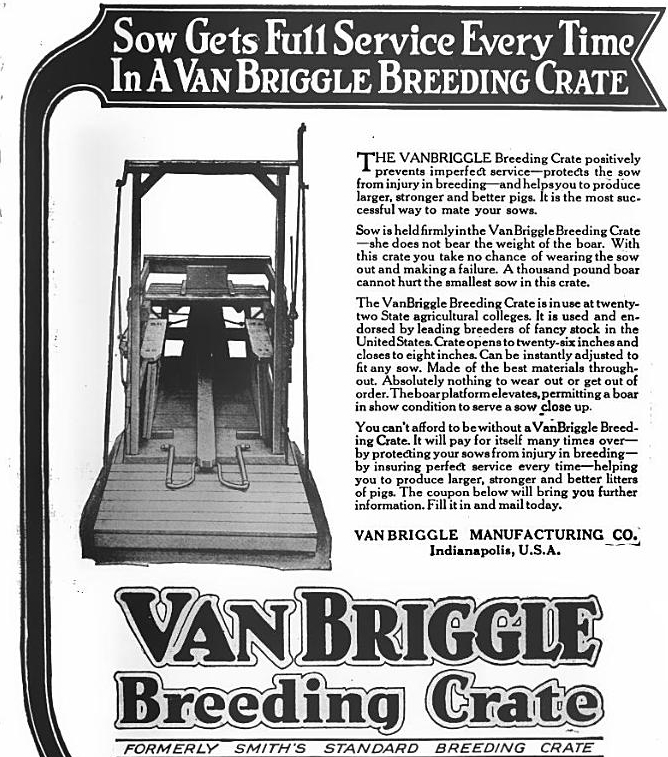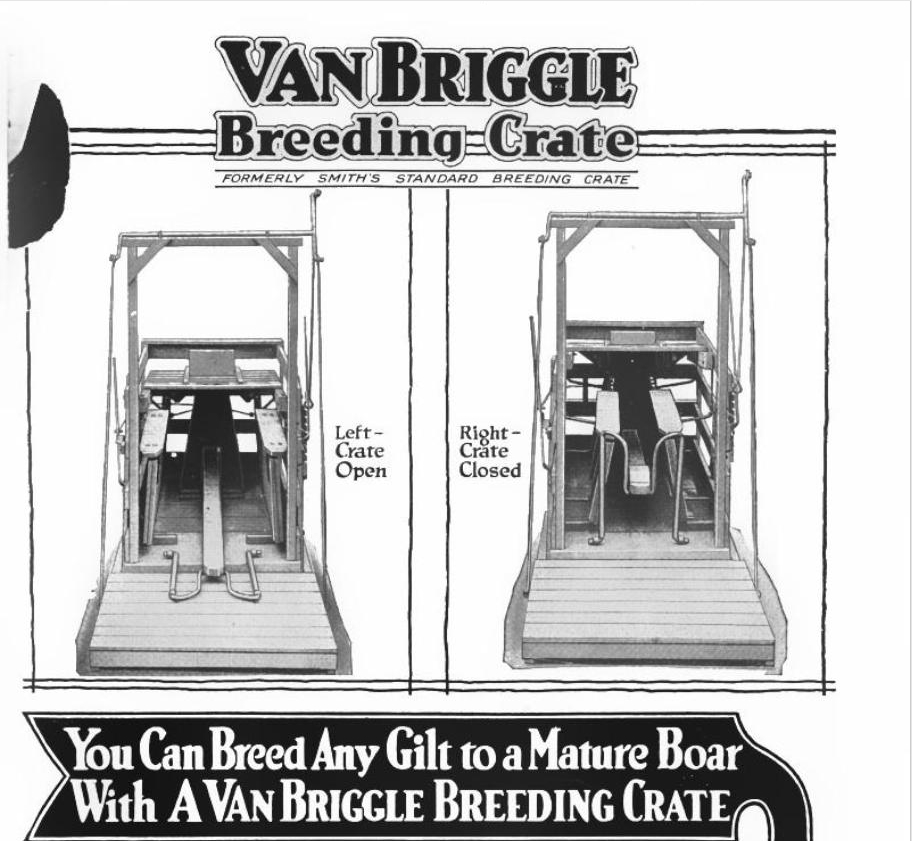What is the place of animals in the history of sexuality? In June, at a campaign stop, Mississippi Senator Thad Cochran testified about his rural roots by reminiscing on how, in his youth, he did “all kinds of indecent things to animals.” The phrase drew knowing laughs from his audience, but it caught the attention of media outlets astounded by the casual confession of bestial indecency. Had Cochran admitted to having sex with animals? And why would an audience of Republican voters laugh at that? They rushed to the zoophilic conclusion because Euro-American cultures are practiced at unseeing the intimate interactions between humans and animals that are necessary to sate collective hungers for meat. Just as meat must be made, so too must the mating. And perhaps this was the very bestial interaction, entirely normal in agricultural spaces, to which Cochran referred.

To date, few historians of sexuality have pondered the relevance of animals to their field, except for some studies of bestiality. But what if we disposed of bestiality as the archetype of human-animal intimacy, and searched, instead, for the ways humans stimulate animals to have sex with each other. I illustrate this point by looking at a piece of common agricultural technology, illustrated in the accompanying advertisement, that was designed to manufacture animal sex and, as a result, made humans a necessary participant in animal sex and the production of animal desire.
The “Van Briggle Breeding Crate” advertisement below ran in a 1920 issue of American Swineherd, a magazine for breeders of hogs, but similar advertisements for “breeding crates” can be located in any of the dozens of magazines that catered to farmers in early twentieth century America. The evolving history of hog breeding in the prior century explains this demand for the crates. In antebellum America, farmers had selectively raised hogs on forage, pasture, and kitchen scraps. Farmers thus exercised minimal control over porcine reproduction. At most, farmers castrated marginal boars, but otherwise most farmers practiced “range” or “pasture” mating: boars ran with sows in heat and mated as they would. After the American Civil War (1861-1865), however, farmers focused on the controlled and efficient management of hog reproduction through more systematic control over the conditions of reproduction and the animals to be mated. Just as animal slaughter and processing underwent industrialization in the late nineteenth century, breeding intensified – that is, mating moved from pasture to box. The stakes of this intensified breeding were considerable. By 1900, the hog population of the United States numbered around 63 million, and the total value of American livestock exceeded that of the combined capital stock of the nation’s railroads.

This multiplication of flesh and capital, however, created mating problems for animals and humans alike. Intensive hog breeding methods meant an increasing ratio of sows to boars, eventually reaching 20 to 1 by 1900. As boars impregnated a growing population of sows, breeders needed to breed older “prolific” boars that outweighed young sows by a factor of two or three. Mating of this sort could seriously injure the sow, as her body was crushed beneath the half-ton bulk of a great, aged sire. In pasture, or even confined in the yard, young sows, fleet of hoof, fled boars or lay on their sides to make penetration impossible. To address this, breeders devised a box with an internal system of bars and levers: the breeding crate. The crate confined the sow during service and forced her to stand upright. The bars and levers, meanwhile, supported the weight of the boar and prevented injury to the sow. One breeder recommended, “give the boar every assistance you can so that he will make a good and satisfactory service.” And, indeed, if the boar, awkwardly suspended above the sow, could not penetrate her, the breeder would literally lend a hand.

By 1930, American hog breeders used breeding crates even when there was no disparity of size. Expert advice in magazines, newspapers, and extension bulletins urged readers to adopt this technology for all hog services. Experts cited at least two reasons. First, the crate permitted optimal control over the timing and circumstances of mating and it allowed the breeder certainty about whether or not the service had actually been completed. Second, hogs needed to be educated in use of the crate. Boars accustomed to crate breeding at a young age were more compliant about entering the crate when they were older. An aged boar unaccustomed to the crate might violently resist, circumstances, in turn, that ruined hog erections.
Given the financial stakes, breeders were attached to hog erections, as well as to the porcine desire that sustained them. To keep boars in the mood, experts prescribed gentle treatment of the boar before and during service, and they concocted complicated dietary and exercise regimens. Breeders believed Damiana, an exotic shrub, stimulated swine libido and they generously doped their boars with its extract. Reflecting and producing the idea that female bodies were passive receptacles for male desire, breeders worried little about the sow’s comfort or desire during service. Sows were forcefully driven into crates where they received sexual violence that they might have otherwise fled or resisted. Intensive breeding created a context in which human breeders both systematized sexual violence and labored to efficiently arouse the desire of male animals.
A century later, animal scientists have precisely inverted this dynamic. Artificial insemination means that the boar’s desire is largely irrelevant. With a reserve of boar semen, the boar’s physical presence, let alone his erection, is no longer necessary to porcine reproduction. Animal scientists note that sows tend to give larger litters when they are aroused during insemination. During insemination, human technicians now labor to “simulate” arousing sex for the sow. When the technician climbs on to the back of the sow to give a sensation of anachronistic “old fashioned” swine sex, it becomes obvious that the very normal practice of agriculture contains within it an extraordinary fluidity, promiscuity, and complexity of pleasures and bodies that remain curiously excluded from the history of sexuality.
 Gabriel N. Rosenberg is an Assistant Professor of the Practice in the Program in Women’s Studies at Duke University. His research interweaves histories of the global food system with histories of race, gender, and sexuality. He received his Ph.D. in History from Brown University and was previously a Postdoctoral Research Associate in Yale University’s Program in Agrarian Studies. His book, Breeding the Future: 4-H and the Roots of the Modern Rural World is forthcoming in 2015 with the University of Pennsylvania Press. His next project, a history of meat-making and technologies of biopolitical governance, is tentatively titled Purebred: Making Meat and Eugenics in Modern America. He tweets at @gnrosenberg.
Gabriel N. Rosenberg is an Assistant Professor of the Practice in the Program in Women’s Studies at Duke University. His research interweaves histories of the global food system with histories of race, gender, and sexuality. He received his Ph.D. in History from Brown University and was previously a Postdoctoral Research Associate in Yale University’s Program in Agrarian Studies. His book, Breeding the Future: 4-H and the Roots of the Modern Rural World is forthcoming in 2015 with the University of Pennsylvania Press. His next project, a history of meat-making and technologies of biopolitical governance, is tentatively titled Purebred: Making Meat and Eugenics in Modern America. He tweets at @gnrosenberg.

NOTCHES: (re)marks on the history of sexuality is licensed under a Creative Commons Attribution-NonCommercial-NoDerivatives 4.0 International License.
Based on a work at www.notchesblog.com.
For permission to publish any NOTCHES post in whole or in part please contact the editors at NotchesBlog@gmail.com





This is a really great post. My only ever so slight disagreement is the separation of hog breeding from bestiality. I would be more inclined to say this is just another form of bestiality. We call it bestiality when the human receives sexual pleasure from masturbating an animal, but we call it breeding when the human receives financial gain. And any one of us who have worn leather, eaten meat, or ridden a horse at any time in our lives are implicated in those human-nonhuman sex acts. We are all always already bestialists.
Hi Jared,
Great comment. I actually agree entirely with this if one takes a broad definition of bestiality. I think, however, that in the present moment bestiality tends to imply a juridical structure that is both over-limiting and that emphasizes animal-human sex as marginal. By contrast, I encourage people to use a framework of intimacy to understand the range of interactions that exist beyond or orthogonal to juridical structures and that, indeed, are both culturally normalized and constitutive of how we conceive what kinds of bodies can receive violence. Curiously — and this is something I’ll be presenting about at ASA in November — many bestiality statutes explicitly countenance acts that, when done on farms, would otherwise be prohibited. My argument is that the symbolic prohibition of sex with animals outside of the context of farms render the death of meat animals as ungrievable events. Such laws constitute meat animals as creatures with whom we cannot experience intimacy and, thus, whose deaths we cannot mourn. Seeing their deaths may be unpleasant, but if we do not expose the intimacy that is already in place producing their lives, we cannot grieve their loss. This is why we need a queer theory of agriculture.
I see what you’re doing—I like the bestiality/intimacy distinction. And your project sounds amazing. Are you going to post your conference paper here? If not I’ll read your book when it comes out.
I’m a PhD student in biblical studies, and I’m working on sexuality and animals in the Hebrew Bible (Old Testament), so I love seeing other people talking about human-animal sex.
Hi Jared,
I hadn’t planned to post the paper here. It’s part of a peer-reviewed article that is going through the peer-review process. But thanks for reading and keep an eye out! Your work sounds fascinating and I’d like to hear more.
I made an examination of bestiality through the ages (including its appearance in Greek mytholody and Egyptian religion through to horse sex farms) in my examination of sexal ‘perversion’ (the term used in its historical context) within the wider framework of sexual acts considered outside the ‘norm’ in the past – homosexuality, lesbian sex, paedophilia, flagellation, oral sex, transexuality, necrophilia etc. You can find it on Amazon: http://www.amazon.com/The-Pleasures-All-Mine-Perverse/dp/1780231857/ref=sr_1_1?ie=UTF8&qid=1409816626&sr=8-1&keywords=peakman+pleasure+all+mine
Historian Julie Peakman, ‘The Pleasure’s All Mine. a History of Perverse Sex’. Despite the publisher’s choice of a rather lurid and purient cover shot, the content is examined within an academic argument.
Are there are secondary sources, monographs or articles, on breeding crates that you could recommend?